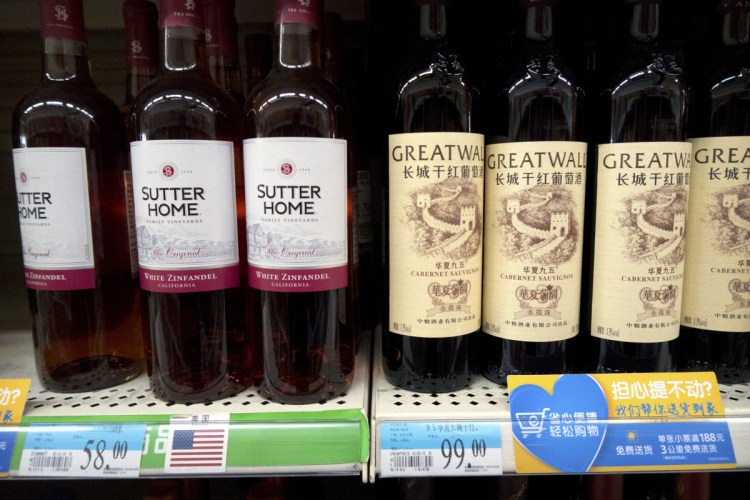WASHINGTON — President Ronald Reagan once likened trade wars to the pie fights in old Hollywood comedies. One pie in the face leads to another. And then another.
Pretty soon, Reagan said in a 1986 radio address, “everything and everybody just gets messier and messier. The difference here is that it’s not funny. It’s tragic. Protectionism becomes destructionism. It costs jobs.”
Suddenly, the world’s financial markets are gripped by fear that an escalating trade rift between the United States and China – the two mightiest economies – could smear the world with a lot of splattered cream and broken crust. If it doesn’t prove tragic, as Reagan warned, it may still inflict far-reaching pain.
The Dow Jones industrial average lost a combined nearly 1,150 points Thursday and Friday after President Trump set his administration on a path to restrict Chinese investment in the United States and impose tariffs on up to $60 billion of Chinese products.
“We should be very worried,” said Bryan Riley, director of the conservative National Taxpayer Union’s Free Trade Initiative. “It’s very possible this could escalate into something that neither country intends.”
The trade sanctions that Trump unveiled Thursday are meant to punish Beijing for pilfering technology from American companies or for forcing them to hand over technology in exchange for access to China’s market. The announcement followed a seven-month investigation by the Office of the U.S. Trade Representative into the tactics China has deployed to try to overtake American technological supremacy.
“China has not been playing by the rules,” said Stephen Ezell, director of global innovation policy at the Information Technology & Innovation Foundation think tank.
Unbowed, China immediately threatened to retaliate if the United States followed through on its actions.
On Friday, Beijing unveiled a broad list of U.S. products – from apples and wine to pork to steel pipe – that could face retaliatory Chinese tariffs in a separate trade spat with Washington. That dispute is over taxes that Trump imposed this month on imported steel and aluminum.
“We don’t want a trade war, but we are not afraid of it,” said Hua Chunying, a spokeswoman for China’s Foreign Ministry.
The stakes are even higher in the standoff over Beijing’s technology policies than in the old-school dispute over metals. An industrial nation’s ability to harness technology is increasingly vital to healthy economic expansion.
“If China dominates the industries of the future, it will be very difficult for the United States to have an economic future,” Peter Navarro, a key White House trade adviser, told reporters.
Trade tensions are rising at a delicate time. The world economy has finally emerged from the shadow of the Great Recession. Major regions are growing in tandem for the first time in a decade. International economic growth is expected to reach a seven-year high of 3.9 percent this year. Last year, global trade expanded 4.2 percent, the most since 2011.
Some trade experts fear that a conflict over technology will erupt into an escalating war of sanctions between the world’s two biggest economies – Reagan’s destructive pie fight.
The U.S.-China tensions remind trade analysts of the Reagan-era skirmishes between the United States and Japan, which at the time appeared to pose a grave threat to U.S. economic dominance.
“This is ‘Back to the Future’ – that old ’80s film,” said Rod Hunter, a former White House trade adviser. Indeed, Trump’s top trade negotiator, Robert Lighthizer, is a veteran of the trade battles with Tokyo, having served in the Reagan administration.
To target China, Trump and Lighthizer dusted off a Cold War weapon from the Reagan years: Section 301 of the U.S. Trade Act of 1974, which lets the president unilaterally impose tariffs. The provision was meant for a world in which much of global commerce wasn’t covered by trade agreements.
Send questions/comments to the editors.



Comments are no longer available on this story